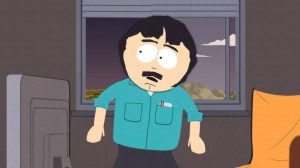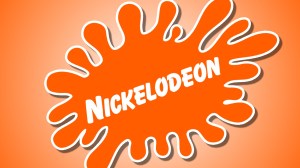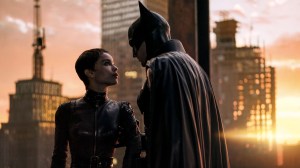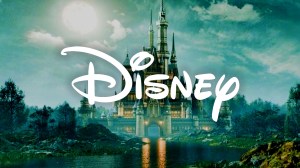Whether a horror fan prefers slashers like Halloween and Scream, supernatural terror like The Conjuring, or found-footage frights like Paranormal Activity, we’re all drawn towards one series of storylines over another. It might be due to the complex mythology of something like Don Mancini’s Child’s Play, it might be due to loving a character design like Jason Voorhees in Friday the 13th, or it might be due to the years of delight we’ve been given from Robert Englund’s Freddy Krueger in A Nightmare on Elm Street. Regardless of what your own predelictions might be in the world of horror, it’s the Final Destination series that has maintained a consistent effectiveness like no other narrative, which is poised to continue with the upcoming sixth entry Final Destination Bloodlines on May 16th.
Videos by ComicBook.com
Created by Jeffrey Reddick, the first Final Destination started its life as an episode of The X-Files, though when he realized the potential of the concept, Reddick instead expanded the material into a feature film. The core principle is simple: what if that bad feeling you got about a potentially dangerous situation proved to be fatal, but even if you changed your plans, death had its own agenda? Reddick went on to collaborate with filmmakers James Wong and Glen Morgan to release Final Destination into the world in 2001. While that first film saw characters who got off a plane that would ultimately explode, only to die in horrible Rube Golberg-ian ways, subsequent films focused on traffic accidents, roller coasters, and construction on a bridge.
One major strength of the series is how it taps into an innate element of the human condition, one that’s kept us as a species alive for tens of thousands of years: fear. Whether it’s a potentially dangerous situation like those featured in iconic opening scenes of Final Destination films or something more mundane like a stranger walking towards you on the street, these bad feelings are something everyone can relate to, no matter how unfounded those feelings might be. Even more frightening to think of is how often we ignore these unsettling vibes out of fear of breaking societal rules; there would be many more delayed flights if everyone who got a bad feeling demanded to be let off a plane in the moments before takeoff and more people would be ejected from theme parks if they warned others about the dangers of death-defying rides.
This universal appeal isn’t limited to Final Destination, as franchises like Halloween or Scream exploit the fear of killers lurking around suburban locales and A Nightmare on Elm Street capitalizes on the concept of injuries suffered in a nightmare impacting you in real life, with many audiences going to sleep every single night. Not everyone can relate to being targeted by a killer three-foot doll like in Child’s Play or opening up a Rubik’s Cube from Hell to become that target of demonic Cenobites like in the Hellraiser series, or even the otherworldly terror of the unknown, as seen in multiple supernaturally leaning series.
[RELATED – This Is Still the Most Iconic Final Destination Moment]
Another reason Final Destination stands out from its peers is because, while it’s not necessarily constrained to one subgenre, the closest box you could put it into would be the realm of the slasher. These film franchises often feature repetitive premises and disposable characters, with the killer being the one that keeps coming back for more. In that sense, Final Destination could be considered the absolute anti-slasher: the intangible concept of death is the throughline. Studios continue to attempt — and often fail — to deliver mascots for their horror properties, not only to keep a recognizable consistency between installments, but also to market these figures and profit off of them without even having to make the stories to support them.
From The Grabber in The Black Phone to Art the Clown in Terrifier to the nonstop barrage of “twisted” versions of characters who have entered the public domain, both studios and filmmakers seem more focused on creating a new icon over a good story. Final Destination, on the other hand, is a no-frills delivery of the ultimate, incomprehensible equalizer: death itself.
It’s worth noting, however, that not all horror icons are created and not all are developed with a focus on its superficial appeal over its organic inclusion in a story. Michael Myers, Jason Voorhees, and Leatherface have all earned their reign of terror, as have Chucky, Pinhead, and Ghostface. Part of their legacy, though, is due to their decades of history and various iterations, which have ultimately led to most of their downfalls.
The early entries into iconic slasher series like Halloween, Friday the 13th, or A Nightmare on Elm Street are debatably stronger in their own right than any installment of the Final Destination series, yet even the most devout fans of those series can admit that each series also has its embarrassing entries. Whether your breaking point is Busta Rhymes seemingly defeating the supernaturally powered Michael Myers in Halloween: Resurrection or Super Freddy in A Nightmare on Elm Street 5: The Dream Child or Jason heading to space in Jason X, every fan ultimately has to settle on what chapter of a series is the worst, even if they still have their merits. Over five films, audiences have come to like certain Final Destination movies over others, yet they all fully deliver on their premises, making it the most consistent long-running franchise. While A Nightmare on Elm Street got meta with Wes Craven’s New Nightmare and Halloween abandoned its iconic killer with Halloween III: Season of the Witch, Final Destination has never been desperate enough to try to reinvent itself.
Speaking to the relatively redundant and repetitive nature of most horror franchises, the Final Destination series has consistently delivered on the promise of the premise, yet without ever having to directly repeat itself. While every installment explores a similar structure — characters escape a near-death experience, bizarre accidents end up resulting in their deaths — the creativity from the filmmakers behind each entry allows for constant invention. From the fan of a car engine pulverizing someone’s skull in a drive-thru to a miscalculated parallel bars dismount folding a body in half to a LASIK surgery causing someone to run out the window of a high-rise, the filmmakers and audiences revel in the absolute absurdity of how one can meet their demise.
Even if you prefer your horror to feature a masked killer or hauntings from another realm, and even if select chapters of beloved properties stand out as masterpieces in the genre, Final Destination is pound for pound the most effective horror franchise that consistently delivers what audiences want while also offering up plenty of surprises. We only hope that Final Destination Bloodlines can keep its horror supremacy running.
Final Destination Bloodlines lands in theaters on May 16th.
What is your favorite horror franchise? Let us know in the comments below or contact Patrick Cavanaugh directly on Twitter or on Instagram to talk all things Star Wars and horror!









